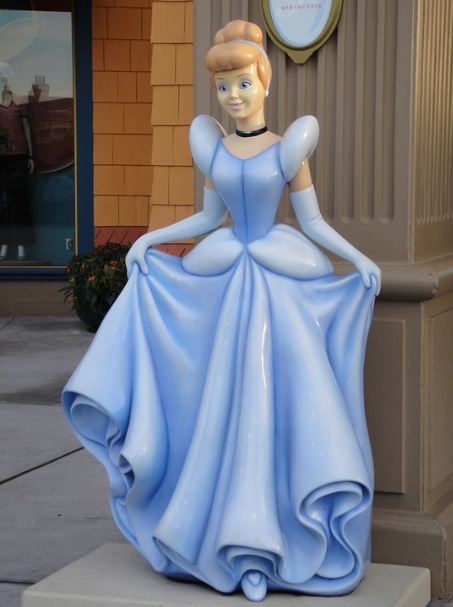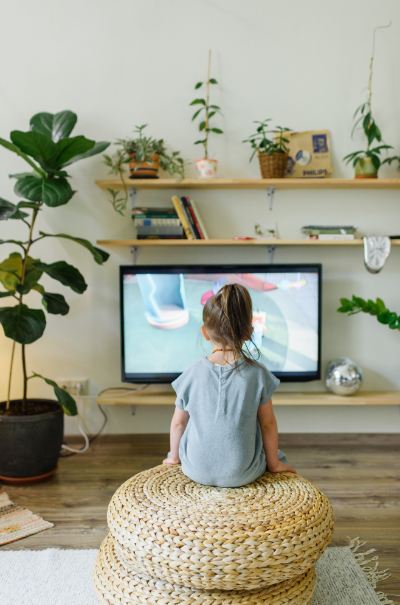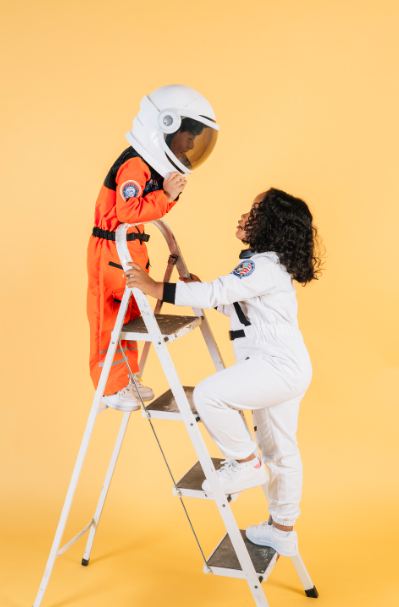It is good to see how parents tend to monitor their children’s viewing content and only allowing the ones that do not, in any way, promote inappropriate behaviors and attitudes. However, besides the PG ratings of the movies, what most of the parents are witnessed to deem as okay is considering that all Disney princess movies are safe.
Since 2000, when Disney launched its Princess franchise, little girls and their parents can be seen obsessing over the movies, the costumes, jewelry, and the story. Countless different varieties of merchandise make millions because of having a princess’s picture printed on them. You can see girls owning and receiving gifts related to Disney princesses – shoes, dresses, birthday cakes, jewelry, school bags, stationery, bedsheets, and even furniture.
Young Girls Relate to the Princesses
Obsessing over watching these movies, receiving gifts, and being encouraged to dress and behave like a princess, young girls tend to relate to them a lot. They identify with a Disney princess and the culture showcased in the movies. They unconsciously mold their behaviors to the match with their favorite fictional Disney princess – for which they get encouraged and showered with love – so the vicious cycle of relating to these princesses goes on.
But a lot of people ask, “What is wrong with that?” and that is when you realize how subliminally all the stereotypical ideas are showcased in these movies. Superficially, the princess’ culture might all be about glamor, pretty dresses, luxuriously easy life, and happy endings. However, in reality, this culture deeply impacts the self-esteem and self-image of young girls.
The Effect of Disney Princesses Culture
Disney Princesses brand heavily advocates physical appearance. It promotes a toxic culture wherein physical beauty and perfection is promoted as the girl’s only asset. These movies encourage young girls to have an unhealthy preoccupation with their beauty and instill an inferiority complex in them if they do not find themselves matching up to their ideal princesses.
Another very damaging impact these movies leave on the minds of the little girls is that a man would come and rescue them from all their miseries. They expect that every problem can be solved by the entry of a handsome young prince and that love happens at first sight and remains unchanged for eternity.
In a child development study, Sarah Coyne conducted a scientific investigation on 198 preschool and kindergarten children (both girls and boys). Her study was inspired by a groundbreaking article by a journalist, Peggy Orenstein, named “Cinderella Ate My Daughter.” The results of the study are outlined below:
- The study revealed that the girls who were more engaged with the Disney Princesses movies appeared to gain more influence from the stereotypical ways the princesses are shown to behave. These little girls were observed to behave more in stereotypical feminine behaviors, such as submissiveness, relying on others to solve problems for them, etc.
- It also highlighted a trend. Little girls who were susceptible to lower body image and self-esteem were observed to have gained interest in the movies.
- No indication of any sort could be witnessed in the results that pointed out positive impacts of watching and relating to the Disney princesses’ movies in girls.
Girls adhering to stereotypical behaviors poses problems as this leads to girls avoiding certain important life lessons just because they are not considered very feminine. The research outlined that little girls inspired by these ideals might not be interested in getting dirty or excelling in math or science, as these behaviors and interests are generally considered as exclusively masculine in patriarchal cultures.
The damages these falsely fabricated ideals bring to the young girls’ thought processes, and conceptualization of life does not stop here. The study also highlighted how the young girls’ minds fill with false beauty standards, which, as a result, produce a distorted body image. The princesses shown in the movies have big round eyes, high cheekbones, fair complexion, smallest waist ever, and tall height.
Inculcating the fact that this is how a princess should look like is gravely damaging the young population. It is setting the bar too high and too unnatural. Not everyone is born with a lighter skin tone, a teen tiny waist, and tons of flowy hair. Little girls with lower body image at the start of Coyne’s study were observed to become more interested in Disney princesses than those who had a high body image.
This emphasizes how the young minds look for validation and seeking role models in Disney princess. In return, they get to learn how the unrealistic standards of beauty are acceptable. This might lead to the development of an inferiority complex or even eating disorders.
Another major contribution in this regard is by the scientific investigations of Charu Uppal from Sweden. She surveyed 140 girls between the ages of 8 to 15 living in five different countries – the US, China, Sweden, Fiji, and India. She asked them to draw a princess and asked questions related to the girls’ interest in princesses’ movies.
Almost all the princess drawings by the girls were depictive of a light-skinned princess in a flowy gown with embellished jewels. The most striking observation was that none of the girls in the study drew the princess in their national attire. They all were asked to draw a princess and not just a Disney princess, but the widespread impact of Disney princesses has made them the worldwide definition of what a princess is.
The study further highlighted how this princesses’ culture is promoting an unhealthy body image. Girls from India, Fiji, and China expressed their opinions that they could not be princesses because of their dark skin color. This the epitome of how these movies and the unrealistic beauty standards shown in them impact the young fragile minds.
Something Good out of This Culture
It is not much talked about, but the Disney princess movies also have an impact on boys. Besides all the negative impacts recorded in the study by Coyne, there was one silver lining. The study showed that boys who watch these movies showed more proactive behavior, including dropping the male stereotyped behaviors and attitudes. They were reported to be more helpful with their peers and were seen dealing with them politely. So, there is some good out of those movies. Probably, showing the boys something different than the usual macho-man content instilled an understanding of both perspectives on them.
Final Verdict – What Disney Did in Response
Though Disney has worked hard to diversify the profoundly popular white and passive roles of its princesses, the large initial impact of old movies still lingers on. Widespread criticisms by social activists, psychologists, educators, and related professionals have resulted in the addition of women of color to the princess lineup, such as Moana, Tiana, Mulan, and Pocahontas.
This step has done a lot to demystify the previously damaging concepts of gendered roles in girls, but the Disney classics such as Cinderella and Snow White still haunt the modern upbringing of the girls.



